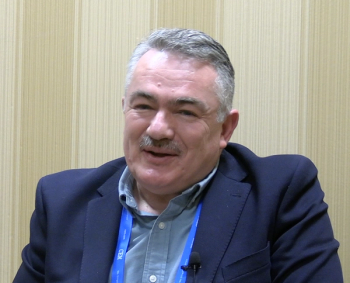
The Latest Applications in Raman Spectroscopy
In this article, the editors of Spectroscopy present an overview of the latest trend in Raman spectroscopy.
Raman spectroscopy is a versatile forensic analysis method. It enables both qualitative and quantitative analysis by measuring the frequency and intensity of scattered radiations, respectively (1). Raman spectra serve as unique fingerprints for a wide array of compounds, allowing simultaneous tracking of polymers in cell walls and analysis of their molecular composition and structure (2). Its sensitivity to subtle structural changes makes it valuable for comparative tests. Ongoing advancements in Raman techniques and instrumentation further enhance its significance in tissue discovery and characterization (2).
Raman spectroscopy remains a popular spectroscopic technique for analytical scientists. It can provide detailed information on the vibrational and rotational modes of molecules, offering insights into chemical bonding, crystal structure, and molecular dynamics. By measuring the energy shifts in scattered light, Raman spectroscopy can identify specific chemical bonds and functional groups within a sample, making it invaluable for materials characterization, pharmaceutical analysis, and forensic science (2). Its non-destructive nature and ability to analyze samples in various states, including solids, liquids, and gases, make Raman spectroscopy an indispensable tool for scientific research and industrial applications (2).
Spectroscopy has published several technical and news articles on the latest research in Raman spectroscopy. Below is a compilation of some of the most recent articles on Raman spectroscopy. To read more about the current and ongoing research being conducted using Raman spectroscopy, click
Monitoring Chemical Changes by Raman Spectroscopy
By: Fran Adar
Polymerization reactions typically involve the loss of a carbon double bond as the chain length is increased, and because the signals from π electrons are strong, the ability to follow this reaction until the end is quite good. However, setting up a polymerization experiment for demonstration purposes can be hazardous. Here, we will show the chemical and spectral changes that occur during the cure of a commercial epoxy.
Read more here:
Micro-Raman Spectroscopy to Analyze Layered Manganese Oxide Structures
By: Aaron Acevedo
Scientists from Ghent University in Ghent, Belgium and Charles University in Prague, Czech Republic published a study in late 2023 on the characterization of different layered manganese oxide structures, using various types of Raman spectroscopy.
Read more here:
Rapid Detection of Covid-19 Using Spectroscopy-based Detection Protocols
In a recent study, spectroscopy-based detection protocols were used to detect Covid-19.
Read more here:
The Application of Raman Spectroscopy in Electroceramics
Raman spectroscopy has not been used in the electroceramics industry extensively. However, according to the authors of this study, a shift is underway to change that.
Read more here:
Using Raman to Monitor Osteoporosis Therapy
By: Aaron Acevedo
In a new study, scientists are investigating Raman spectroscopy as a technique for monitoring postmenopausal osteoporosis
Read more here:
Rice Quality Evaluated Using Raman Spectroscopy and Multivariate Analysis
By: Aaron Acevedo
Scientists from Hirosaki University Graduate School of Science and Technology in Japan evaluated the eating quality of white rice samples using Raman spectroscopy.
Read more here:
Reference
(1) Bumbrah, G. S.; Sharma, R. M. Raman Spectroscopy – Basic Principle, Instrumentation and Selected Applications for the Characterization of Drugs of Abuse. Egyptian J. For. Sci. 2016, 6 (3), 209–215. DOI:
(2) Saletnik, A.; Saletnik, B.; Puchalski, C. Overview of Popular Techniques of Raman Spectroscopy and Their Potential in the Study of Plant Tissues. Molecules 2021, 26 (6), 1537. DOI:
Newsletter
Get essential updates on the latest spectroscopy technologies, regulatory standards, and best practices—subscribe today to Spectroscopy.




